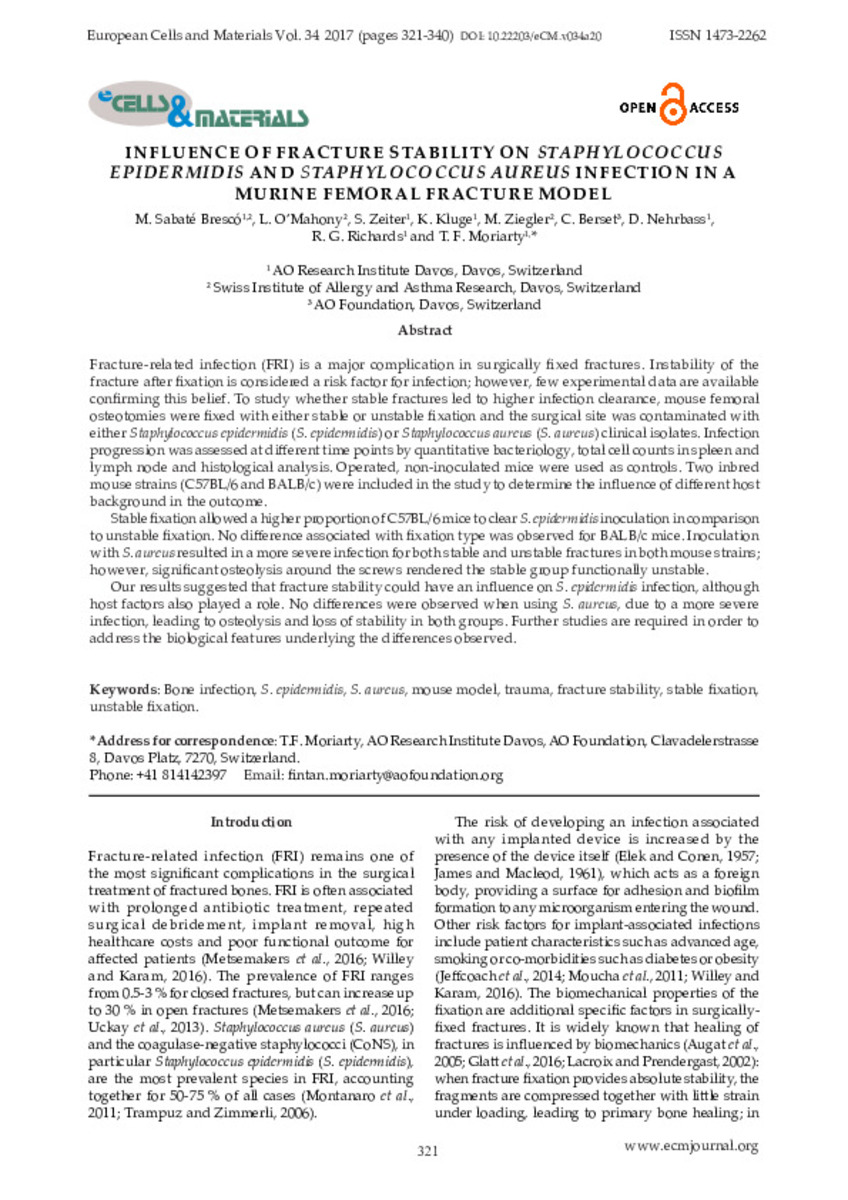Influence of fracture stability on Staphylococcus epidermidis and Staphylococcus aureus infection in a murine femoral fracture model
Keywords:
Bone infection
S. epidermidis
S. aureus
Mouse model
Trauma
Fracture stability
Stable fixation
Unstable fixation
Editorial note:
© Open Access / Author retains copyright (CC BY)
Citation:
Sabaté-Brescó, M. (Marina); O'Mahony, L. (Liam); Zeiter, S. (Stephan); et al. "Influence of fracture stability on Staphylococcus epidermidis and Staphylococcus aureus infection in a murine femoral fracture model". European Cells and Materials. 34, 2017, 321 - 340
Statistics and impact
0 citas en

0 citas en

Items in Dadun are protected by copyright, with all rights reserved, unless otherwise indicated.







